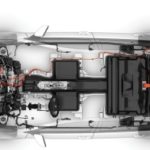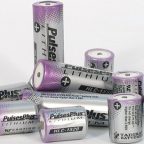Single-inductor, multiple-output circuitry can provide the kind of high conversion efficiency necessary for super-small consumer electronics.
Cary Delano, Reno Rossetti | Maxim Integrated
When you’re designing hearables and wearables, user experience dictates that long battery life is a key requirement. Nobody wants to stop and recharge the batteries on their earbuds during a long walk or while working on a home remodeling project. Or consider a medical patch that might sit in a storeroom long before being used. You wouldn’t want the battery to die before the patch gets into a patient’s hands.
The task of extending battery life is even more challenging in ultra-small electronic devices where device size limits battery capacity. One way to manage power use in these types of products is with a specific kind of switching regulator: a single-inductor multiple-output (SIMO) power converter optimized for low quiescent current. A closer look at the SIMO architecture reveals why it is advantageous in these types of applications.


A typical power management system for a hearable device includes a power management IC (PMIC) that uses a battery charger, a buck converter, and a low-dropout regulator (LDO) to power the sensors. A dual LDO powers the microcontroller, Bluetooth, and audio. There are also some external passives. Because LDOs are used for three rails in this architecture, the overall efficiency of such a typical implementation is only 69.5%.
Fortunately, the SIMO architecture shines in delivering efficiency. Let’s illustrate how this architecture works using SIMO buck-boost regulators as an example. For context, in a traditional architecture, using switchers instead of LDOs to improve efficiency, each switching regulator would need a separate inductor for each output, so each voltage rail could be serviced by an individual inductor. Inductors are typically large and expensive. Their size is a reflection of the necessary current-carrying capacity (as measured by Isat, the total saturation current). Therefore, designers of ultra-small electronic devices want to minimize the number of inductors.
A more compact option could use linear regulators, but they are lossy. A SIMO architecture, on the other hand, reduces the number of inductors needed while still providing the efficiency you’d expect from a switching converter. What’s more, by minimizing the number of inductors, a SIMO further reduces the total footprint compared to a circuit using multiple inductors.


Consider the nearby diagram of a new buck-boost SIMO regulator. In this architecture, there are three independently programmable power rails from a single inductor. This approach reduces component count, maximizes available board space, and delivers high efficiency. Buck-only SIMO architectures are an option, but when an output voltage approaches the battery voltage, the buck-only SIMO would need the inductor for too much time, impacting other channels. The buck-boost SIMO architecture uses the inductor more efficiently because it requires less time to service each channel. Also, circuits that require at least one boost voltage are almost always better with a buck-boost SIMO.
One might wonder how a SIMO uses one inductor and still delivers high efficiency on each output. Fundamentally, a SIMO is still a switching architecture which includes an inductor. It maintains the low loss of a traditional inductive switching converter by turning on switches when there is near-zero volts across them. This practice keeps the dissipation low. The SIMO adds the benefit of time-sharing the inductor to each output (SBB0, SBB1, and SBB2 in the figure) using low-loss switches, maintaining the same high efficiency one would expect from a buck-boost converter.
Design tradeoffs in hearables
Hearable devices differ from standard stereo Bluetooth headsets in several ways. Hearables, for example, integrate one or more optical or inertial MEMS sensors. Through use of photoplethysmography (as employed by FitBit and Apple watches), an integrated optical sensor can measure blood-oxygen saturation, pulse rate, or vital signs. One problem is that to generate enough light, LEDs must operate at a voltage range (4 to 5 V) higher than that of Li+ batteries. This leaves designers with a tough decision: Add a buck-boost to the system, which means another IC; add another inductor and more capacitors, an option that also takes up space and volume; or accept higher power dissipation, undesirable in small systems.
The SIMO buck-boost architecture provides an answer without the unsavory tradeoffs. This architecture can use one of its outputs set to the desired voltage, up to 5.2 V, to drive the LED and also optimize sensor performance.
The Isat of an inductor is a function of its core volume. At first glance, this may seem to imply that a SIMO offers no advantage versus separate bucks. However, compared to using separate dc-dc converters, a single inductor in a SIMO architecture provides significant advantages:
• Better use of Z-height (when the system allows it).
• Lower cost through use of fewer inductors; and less area on the board devoted to inductor spacing.
• Time multiplexing. Often, different features aren’t used simultaneously. When one system is off and another is on, the two can share their Isat if they share the inductor. This approach is useful for events that happen sequentially using different rail voltages. One example is in Bluetooth systems where the data can be downloaded before it activates a function.
• RMS (current rating for inductors)—Even when channels aren’t time-multiplexed, often they don’t consume peak power simultaneously, which can lower the total inductor Isat requirements.
Though there are tradeoffs associated with the SIMO architecture, they can be managed with careful design. Ripple voltage is one concern. With a single inductor providing multiple buckets of energy, ripple voltage will often be high. Larger output caps can help offset this ripple. And compared to traditional architectures, SIMO configurations may exhibit more crosstalk.
An example of a SIMO that addresses these tradeoffs is the Maxim MAX77650 PMIC. It features a micropower SIMO buck-boost dc-dc converter implementing three switching regulators using a single inductor. Its high-frequency operation lets the PMIC use a small inductor, which saves board space. In a single chip (2.75 x 2.15 x 0.8 mm WLP), the MAX77650 integrates the battery charger and regulation for powering the sensor (3.3 V), the microcontroller (1.2 V), the Bluetooth, and audio (1.85 V). In standby mode, the part draws just 300 nA and in active mode, 5.6 uA. Overall system efficiency is 78.4% as described in the accompanying table.
 An integrated LDO in the PMIC provides ripple rejection for noise-sensitive applications such as audio. Optional resistors (24 Ω) in series with the serial data line (SDA) and serial clock line (SCL) minimize crosstalk and undershoot on bus signals, simultaneously protecting device inputs from high-voltage spikes on the bus lines.
An integrated LDO in the PMIC provides ripple rejection for noise-sensitive applications such as audio. Optional resistors (24 Ω) in series with the serial data line (SDA) and serial clock line (SCL) minimize crosstalk and undershoot on bus signals, simultaneously protecting device inputs from high-voltage spikes on the bus lines.
To further extend battery life, every block in these regulators has low quiescent current (1 µA per output). The PMIC always operates in discontinuous conduction (DCM) mode, so the inductor current goes to zero at the end of each cycle, further minimizing crosstalk and preventing oscillation.
The converter in this architecture has a SIMO control scheme with a proprietary controller that ensures all the outputs are serviced in a timely way. The state machine rests in a low-power rest state when no regulators need service. When the controller recognizes a regulator needs service, it charges the inductor until the peak current limit is reached. Then the inductor energy discharges into the associated output until the current reaches zero.
When multiple output channels need servicing simultaneously, the controller makes sure no output uses all the switching cycles. Instead, the cycles interleave between all the outputs needing service, skipping those that don’t. A soft-start feature is implemented by limiting the slew rate of the output voltages during startup. Each SIMO buck-boost channel provides an active-discharge feature that automatically enables independently for each SIMO channel based on the SIMO regulator status. This approach provides for complete and timely power-down of system peripherals.
References
MAX77650 evaluation kit, www.maximintegrated.com/en/products/power/battery-management/MAX77650EVKIT.html
Nested hysteretic current-mode single-inductor multiple-output (SIMO) boosting buck converter, www.ieeexplore.ieee.org/stamp/stamp.jsp?arnumber=6573566&tag=1
Hearables Get Longer Life with SiMO, www.maximintegrated.com/en/design/technical-documents/design-solutions.html




Leave a Reply